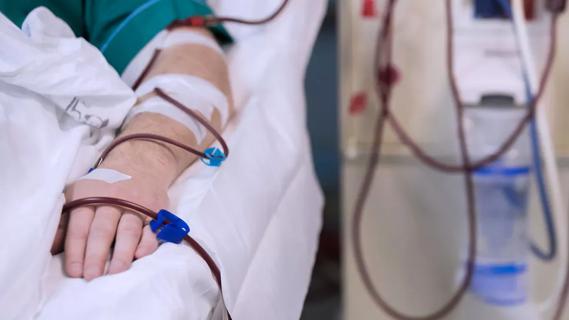Nursing units create efficiencies, save money

Medical supplies account for 17 percent of total hospital expenses, according to the independent research firm Market Realist. That’s a significant portion. One of the goals of continuous improvement (CI) projects at Cleveland Clinic is to reduce excessive spending on supplies, while ensuring that clinicians have what they need.
Advertisement
Cleveland Clinic is a non-profit academic medical center. Advertising on our site helps support our mission. We do not endorse non-Cleveland Clinic products or services. Policy
“We have a return-on-investment just like everyone else,” says Susan Coyne, BSN, RN, senior continuous improvement specialist for the Zielony Nursing Institute. “We look to make units more efficient. I haven’t been to one yet where we haven’t worked on supplies: Do nurses have what they need, when they need it and in the quantity they need to take care of patients?”
Many CI projects related to supplies are “just do it” projects – ones that can be implemented quickly and yield immediate results. “One of the easiest wins when working in a nursing unit is getting a handle on supplies,” says Coyne. “I always ask nurses, ‘What do you have in your pocket?’ because whatever they have in their pockets is not available when and where they need it. That’s why they keep it in their pockets.” The No. 1 answer, Coyne says, is IV flushes.
These “just do it” projects were executed in nursing units across the Cleveland Clinic health system:
Surgical ICUs – Main Campus: In the fall of 2017, the SICUs made several changes. One was to reorganize their Omnicell® supply bins to place similar items together and decrease the time nurses spend looking for supplies. “We reassessed PAR levels [periodic automatic replenishment] and either increased or decreased the number of items in the bin, which opened up space for much needed items and decreased waste,” says Susan Wilson, BSN, RN, CCRN, NE-BC, Nurse Manager of the SICUs. The units also allocated a bin for return items. Staff place items laying around the unit in the bins, then clinical technicians return them to the Omnicell to recoup lost revenue and keep the units organized. These initiatives saved the SICUs approximately $10,000 in supplies.
Advertisement
Medical/Surgical (Renal) – Hillcrest Hospital: When CI Specialist Louie A. E. Hendon, III, worked with the med-surg unit in 2016, nurses complained about wasted time searching for supplies throughout the unit. “Instead of spending time with the patient, nurses and aides found themselves traveling in and out of the patient’s room to the storage room or the nurse’s stations to receive basic things needed for patient care,” says Hendon. To remedy the problem, the CI team first got input from staff on all the essential items needed within a patient room. The list was reviewed by the nurse manager, then the team set PAR levels for each item. In addition, the team standardized how items should be stored and restocked. It also placed a supply list and picture on the inside of each cabinet door so caregivers can easily see if items are missing. These steps to organize supplies stored in patient rooms saved the unit $1,400 per quarter.
Internal Medicine/ENT/Plastics – Main Campus: At the beginning of 2017, the unit set reducing supply waste as a goal and initiated two interventions. First, the nurses created a return bin for unused supplies. At the end of each shift, nurses place unused items from their pockets in the bins, then an equipment technician returns them to the Omnicell. Second, an equipment technician labeled all the items in the Omnicell with their cost. “Staff used to grab handfuls of supplies, but now they are aware of the cost and only bring in what they need to patient rooms,” says Jessica Staab, MSN, RN, CMSRN, Nurse Manager for internal medicine/ENT/plastics. Last year, the unit was $5,755 under budget for supplies.
Advertisement
Changes such as these not only save money and create efficiencies, but they contribute to improved patient care, too. Says Hendon, “When staff spends less time walking back and forth for supplies, they are able to treat patients in a timely manner and they don’t have to worry about whether the right supplies will be there or not.”
Advertisement
Advertisement

Building a culture that supports, engages and empowers nursing staff

Caregivers rely on cross-hospital collaboration to guide critical response

Nurses play a pivotal role in Cleveland Clinic Connected, a global affiliation program aimed at sharing expertise

Nurse connects patients with Cleveland Clinic experts across the globe

Clinicians prepare to deliver lifesaving care in the face of public health threats

Phone triage system reduces call backs and delays in care

New protocol reduces costs, increases patient and caregiver satisfaction

New options benefit caregivers, nursing units and patients